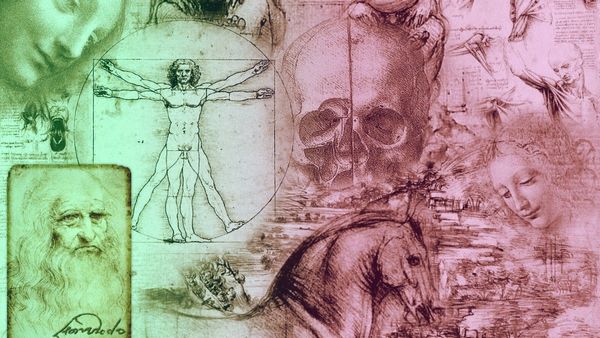Beni • • 4 min read
How to Live in Accordance with Your Atheistic Belief

Atheists are often viewed as a more self-righteous community of people. It is unfortunate because the adoption of atheistic belief is frequently driven by the desire to be the opposite of many things including judgmental and self-righteous. Sometimes in the quest to gain and share knowledge we can develop an air of arrogance. This is not exclusive to the atheist community but in this article I will offer a perspective, which is in accordance with the core concept of atheist belief, that I believe would be beneficial for all atheists to consider rather than the arrogant and narrow-minded one they have become known for which can contradict and undermine the atheist view entirely. ‘Right’ and ‘wrong’ will be used as a blanket term to apply to all judgments that humans make against other cultures, communities or individuals and not necessarily in the strict morality or legal sense of the words.
We will tackle this topic by deconstructing the basic concept of differing perspectives, comparing the core ideologies of atheism and theism based on this concept, and using this understanding to define a perspective for atheists that does not contradict the core of atheistic belief.
The Basic Idea of Perspective
A professor hands a few students in a Psychology class one piece each of a puzzle. One by one, based only on their individual puzzle piece, they voice what they think the ‘big picture’ might be. They are told to observe how their own first impression or perspective will change as they hear how others comprehend their pieces of the puzzle. Answers like “I don’t know” are applauded. This is life and this is how we form our ideas and beliefs, creating our perspective of the world around us. The class agrees that some of them might have a good idea of what the ‘big picture’ is based on their pieces of the puzzle but none of them can be 100% sure.
The students are then asked to assemble the puzzle. Suddenly, with all pieces or perspectives assembled the ‘big picture’ becomes much clearer, even shedding light on the meaning of their own pieces. Next the professor asks that everyone who was even a little bit wrong about the ‘big picture’ raise their hand and remove their piece. They are ‘wrong’ (what an awful terrible thing to be!) and their perspectives have no place with the others. The ‘big picture’ immediately becomes less clear as important information is removed that was useful to everyone’s perspective of both the ‘big picture’ and their own piece. This is what we do to the ‘idiots’ of our society. We regularly dismiss the entire perspective of a person who may hold one differing idea that we simply do not understand or refuse to accept. Our pieces of the puzzle are, however, important and we are unable to grasp the ‘big picture’ that we seek to understand without readily seeking the perspectives of others.
Classifying Atheism and Theism
Following our convenient puzzle metaphor, the sole difference between atheism and theism is that of the existence of a witness to the ‘big picture’. In our class, the students had an opportunity that we never receive in real life. They were able to assemble the pieces, see how it all fit together thus developing a definitive answer. They were consequently able to label the perspective of each student as either right or wrong.
Simply, a theist believes that there is one or many who can see the ‘big picture’ and who then knows, without a doubt, who is right and wrong in their perspectives, actions, choices or any other respect. Most theists would believe confidently that this omniscient one holds the same idea of right and wrong as they do.
The atheist belief would hold that there is no witness to the right and wrong, an assembled puzzle in an empty classroom. As the class was able to agree, while they might have had a great idea of the ‘big picture’ based on their own perspective, there was no possibility of being 100% correct.
The idea of right and wrong is a theist-minded concept. Now, let us define atheism for ourselves as the belief that there is no one judge who knows definitively the nature of right and wrong.
Attempting to Live in Accordance with Your Atheist Belief
Dispose of your notion of ‘right’ and ‘wrong’
According to the nature of atheistic belief, omniscience does not exist. An atheist should seek to understand that there is no universal right or wrong. Subsequently, their definition of it could never be accepted, even by themselves, as the correct one above all others.
Accept that your perspective is one of many flawed ones
Anyone with a perspective on the world around them is capable of being right and equally wrong. The lack of a judge in atheist belief ought to negate all arguments for a practicing atheist. The need to be right has proven dangerous in the past; murder, war and genocide are things we’ve grown accustomed to in the quest to prove oneself correct.
Entertain as many perspectives as possible
Now that you have fully accepted your perspective as both undeniably flawed and in need of more information, you have an opportunity to engage in the open and understanding exchange of information and ideas. Learn! Entertain the perspectives of others as a means to better understand and fine tune your own. We are all solely out to understand the universe we have found ourselves in. The more we learn about how others perceive the ‘big picture’ the closer we come to answers we can confidently call our own.
Think I’m wrong? Awesome. Thank you so much for reading and understanding my perspective anyway.
Namaste.


![Seneca’s Groundless Fears: 11 Stoic Principles for Overcoming Panic [Video]](/content/images/size/w600/wp-content/uploads/2020/04/seneca.png)







